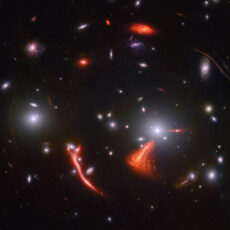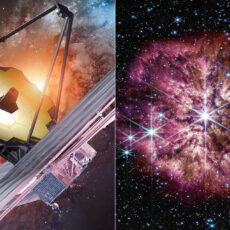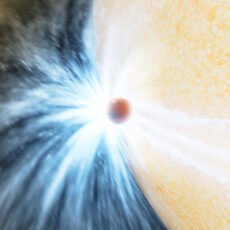
In this Hubble Space Telescope image, we can clearly see the interacting galaxy pair known as Arp-Madore 2339-661, but upon closer inspection, there’s a third galaxy that cannot be easily seen. To be more clear, the third galaxy can be observed as a notable knot-like structure, glowing with a different color to the arm and obscured by dark dust.

The two clearly defined galaxies are NGC 7733 (smaller, lower right) and NGC 7734 (larger, upper left), while the third galaxy is known as NGC 7733N. These three galaxies are located approximately 500 million light-years from Earth in the constellation Tucana, and interacting gravitationally with one another. Ultimately, this ‘merging group’ will become a single entity over time.
- LEGO NASA Space Set - This adult LEGO set features the Space Shuttle Discovery and the Hubble Space Telescope from NASA’s 1990 STS-31 mission,...
- Solar System Exploration - Unlock the mysteries of our solar system with this engaging 2,354-piece project, packed with authentic details and...
- Shuttle Features Galore - The space shuttle model has an opening payload bay, retractable landing gear, opening cockpit, moving elevons, space arm,...
This is actually one of the many challenges that observational astronomers face: working out whether an astronomical object really is just one, or one lying in front of another as seen from Earth’s perspective!,” said the European Space Agency.










